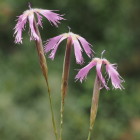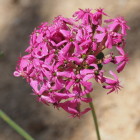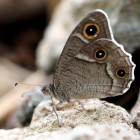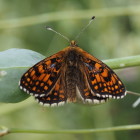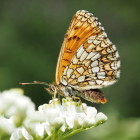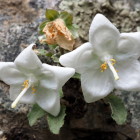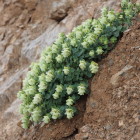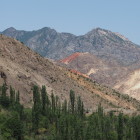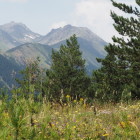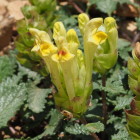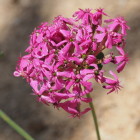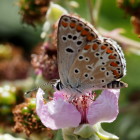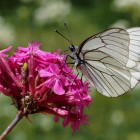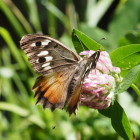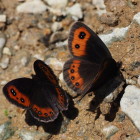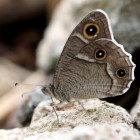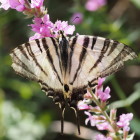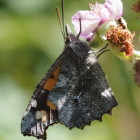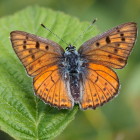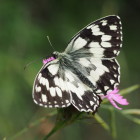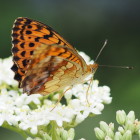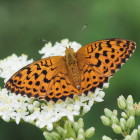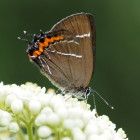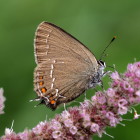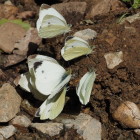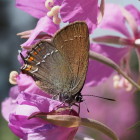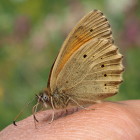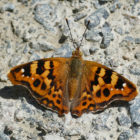Dates & Prices |
BOOK NOW |
Dates: 15th – 24th July 2025 Confirmed departure
Price: £2,095 2 places left
Single Room Supplement: £195
Deposit: £150 per person
Price Includes: Accommodation, all meals, ground transport, services of guides, entry fees, holiday report & a donation to Butterfly Conservation
Not Included: International & internal flights, travel insurance, drinks and any other personal items
Conservation Donation: Butterfly Conservation Europe
Leader(s): Ben Greenaway & Yasemin Konuralp
Group Size: Minimum of 6 and a maximum of 12 guests plus 2 leaders
Grade: The trip is in remote, rugged mountains and requires a moderate level of fitness in order to see all the amazing butterflies. Although many days are easy walking down rough tracks and roads, where butterflies are seen easily along the edges, there are some steep and rough areas in the mountains. One of the hotels is also up some steep uneven steps.
Holiday Highlights
- Stunning landscapes of imposing mountains, alpine & subalpine meadows, woodland, rivers & Mediterranean habitats – home to an extraordinary diversity of flowers, insects and other wildlife!
- 200+ butterfly species have been recorded in the region – more than half of Turkeys impressive total number of around 380!
- 120 – 140 species usually seen (on the last tour we also recorded a massive 93 species on a single day!)
- 45 endemic butterfly species & 21 near endemics make Turkey a very special place
- Rich flora with 2,500 species of plants, 300 of which are found exclusively in Turkey and 160 found only in the Kaçkar Mountains
- 10 day tour to ensure plenty of time to enjoy locations & wildlife without rushing around
- Relaxed pace ideally suited to photography & full enjoyment of the wildlife & scenery
- Contribute to Butterfly Conservation
After several tremendously successful years we’re back again in 2025 for our unique & exclusive tour exploring the Kaçkar Mountains in northeast Turkey for a wonderful array of butterflies, flowers, and other wildlife!
Join our flagship butterfly tour in the Kaçkar Mountains! Ben Greenaway has been studying the butterflies closely here for years & it is one of his favourite places with a magical ingredient & excitement that you’re in an barely explored place for butterflies. He will be joined by vastly experienced & knowledgeable local guide & expert on the regions flora Yasemin Konuralp. Together they will take you to some amazing places, full of butterflies & flowers! The Kaçkar mountains rise steeply from Turkey’s Black Sea coast and are an extension of the Caucasus mountains which are considered by the World Wild Fund for Nature and by Conservation International as a biodiversity hotspot. The Çoruh valley lies at the very heart of the Kaçkar. Steep-sided valleys, alpine meadows, river-side vegetation, Mediterranean habitats, all contribute to a diversity of habitats that account for the formidable list of butterflies that reside in the area – we regularly record 120-140 species on the this tour. During our holiday we will sample all the different habitats of the Çoruh valley to look for the regions butterflies. A wealth of Lycaenids that include Little Tiger Blue, Odd-spot Blue, Bavius Blue, Bosnian Blue, Large Blue, Aedon Blue, Meleager’s Blue, Silver-studded blue, False Chalk-hill Blue, Checkered Blue as well as Lesser Fiery Copper, Turkish Fiery Copper, Balkan Copper, Ilex Hairstreak, White-Letter Hairstreak, and Gerhard’s Black Hairstreak. Other local or beautiful species include Orange Hermit, White-bordered Grayling, Geyer’s Tawny Rockbrown, Russian Heath, Lederer’s Heath, Small Bath White, Balkan Marbled White, Scarce Swallowtail, Caucasian Spotted Fritillary, Silver-Washed Fritillary, High Brown Fritillary, False Heath Fritillary, Queen of Spain, Apollo, Ionian Emperor and a wealth of exotic skippers! Turkish flora is incredibly rich, with 11466 species, 3650 of which are endemic. This diversity stems principally from country`s geographical position, sandwiched between the steps of Central Asia, the deserts of Syria, the cold afforested mountains of Central Europe, and the Mediterranean to the west. The unspoilt area we’ll visit is very rich botanically, with many species of Campanula, Gentians, Centaurea, Dianthus, Silene, Digitalis exotic Acantholimon, beautiful Papaver and many others. The many habitats of the Kackar support a good range of birds. The lower valleys host Blue Rock Thrush and Bee-eaters while streams support Grey and White Wagtails, Dippers and Common Sandpipers. Forests and Mountain hillsides are home to Tree Pipits, Rosefinches, Redstarts, Chukar, Red-Backed Shrikes, Red-Fronted Serins, Ring Ouzels, Ortolan Buntings, Rock Thrushes, Short-toed Treecreeper and several species of Woodpecker. Birds of prey such as Buzzards, Honey-Buzzards, Long-legged Buzzard, and Golden Eagles may be seen soaring over the valleys. There are also many lovely day-flying moths such as Nine-spotted Moth as well as spectacular crickets and grasshoppers in the upper valleys. Accompanying us will be Yasemin Konuralp, who has over 20 years experience in guiding tours in Turkey. During that time she has built up considerable knowledge about the endemic wildflowers of the country, which has culminated into a Wildflowers of Turkey field guide, published in 2013. We hope to welcome you on what will be a truly memorable tour! 
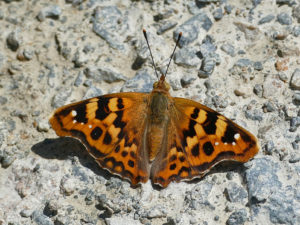


Day 0: Overnight flight to Istanbul (mainly applies to UK travellers)
Day 1: July 15, 2025 (Tuesday)
Arrival at Erzurum airport early morning. We will take a short drive to our hotel on the slopes of Mount Palandoken. Many of the group have travelled through the night so we will stay close to our base today and explore the very rich steppe and mountain steppe habitat on our doorstep. These flowery hillsides will deliver an excellent range of species and we particularly hope to find Eastern Orange Tip Anthocharis damone, Menetries’ Clouded Yellow Colias thisoa, Balkan Copper Lycaena candens, Lesser Fiery Copper Lycaena thersamon, Aedon Blue Polyommatus aedon, Pontic Blue Polyommatus coelestina, False Chalkhill Blue Polyommastus corydonius, Cardinal Argynnis pandora, Niobe Fritillary Argynnis niobe, Twin-spot Fritillary Brenthis hecate, Balkan Marbled White Melanargia larissa, Yellow-banded Skipper Pyrgus sidae, Persian Skipper Spialia phlomidis and Aegean Skipper Pyrgus melotis.
Overnight in Erzurum.
Day 2: July 16, 2025 (Wednesday)
We will take a short drive to the beautiful Gungormez Valley where we hope to see a wide range of species on the grassy hillsides. This is an exceptionally species rich area and the potential list is very long. Target species include Odd-spot Blue Turanana endymion, Alcon Blue Phengaris alcon, Dusky Large Blue Phengaris naustihous, Eastern Brown Argus Plebejus eurypilus, Loew’s Blue Plebejus loewii, Meleager’s Blue Polyommatus daphnis, Ripart’s Anomalous Blue Polyommatus ripartii, Gerhard’s Black Hairstreak Satyrium abdominalis, Rebel’s Hairstreak Satyrium myrtale, Lesser Fiery Copper Lycaena thersamon, Cardinal Argynnis pandora, Spotted Fritillary Melitaea didyma, Balkan Marbled White Melanargia larissa, Yellow-banded Skipper Pyrgus sidae, and Persian Skipper Spialia phlomidis. There is also a good chance of Yellow-legged Tortoisesehell Nymphalis xanthomelas.
Overnight in Erzurum.
Day 3: July 17, 2024 (Thursday)
Transfer to Barhal in the Coruh Valley, stopping on the way to look for butterflies.
We shall pass through different habitats, initially dry and becoming greener as we move up the valley, each with its different butterfly species. We shall make several stops and look for Little Tiger Blue Tarucus balkanicus, Grass Jewel Chilades trochylus, Hopffer’s Blue Polyommatus hopferii, Poseidon Blue Polyommatus poseidon, Fiery Copper Lycaena thetis, Turkish Fiery Copper Lycaena ochimus, White-bordered Grayling, Hipparchia parisatis, Freyer’s Grayling Hipparchia fatua, Eastern Grayling Hiapparchia pellucida, Amasian Satyr Satyrus amasinus, Nettle-Tree butterfly, Libythea celtis, Ionian Emperor Thaleropis ionia, Scarce Swallowtail Iphiclides podalirius and another of the specialities of the region, the Orange Hermit Chazara bischoffii. The dry terrain at the beginning of the valley hosts plants typical of this habitat such as Dianthus orientalis, with its characteristic propeller-shaped petals, Andrachne telephioides, the food plant of the Grass Jewel and Paliurus spina-christi, the food plant of the Little Tiger Blue.
Overnight in Barhal Village.
Day 4: July 18, 2025 (Friday)
Today we will climb high up the Bicakcilar Valley. We will adjust our altitude according to the state of the season, with the option of climbing to 2500 m if necessary. We hope to find spectacular congregations of mud-puddling butterflies and will spend the whole day stopping at various altitudes to explore the area. Target species for today include Eastern Orange Tip Anthocaris damone, Balkan Clouded Yellow Colias caucasica, Powdered Brimstone Gonepteryx farinosa, Eastern Baton Blue Pseudophilotes vicrama, Anatolian Zephyr Blue Plebejus modicus, Blue Argus Aricia crassipunctus, Aedon Blue Polyommatus aedon, Turquoise Blue Polyommatus dorylas, Eros Blue Polyommatus eros, Iphegenia Blue Polyommatus iphigenia, Turkish Blue Polyommatus turcicus, Large Blue Phengaris arion, Ionian Emperor, Thaleropis ionia, Southern White Admiral Limenitis reducta, Camberwell Beauty Nymphalis antiopa, Large Tortoiseshell Nymphalids polychloros, Grey Asian Grayling Pseudochazara geyeri and Eastern Rock Grayling Hipparchia syriaca.
Overnight in Barhal Village.
Day 5: July 19, 2025 (Saturday)
We will spend the day exploring the Pishankara Valley. We will not travel far from our base, so naturally many of the target species will be the same as the previous day. This is another beautiful valley and spending the day here gives us a second chance to find any species that we may have missed on the previous day. Again here we hope to find spectacular congregations of mud-puddling butterflies. We have found this valley to be particularly productive for Camberwell Beauty Nymphalis antiopa, with both adults and immature stages being found. Nettle Tree Butterfly Libythea celtis can also be particularly numerous here and the lush river banks lined with Dwarf Elder can be a magnet for fritillaries, with Silver-washed Argynnis paphia, High Brown Argynnis adippe. Marbled Fritillary Brenthis daphne, Heath Fritillary Melitaea athalia, False Heath Fritillary Melitaea diamina and Pearl-bordered Fritillary Clossiana euphrosyne being very common. The Çoruh River is home to two special Campanulas, Campanula troegerae and the similar looking but very rare Campanula choruhensis. Both are large-flowered beautiful species growing on the vertical walls of the gorge and we shall look for both. A number of Salvia species such as S. nemorosa and S. verticillata are common along the roadsides.
Overnight in Barhal Village.
Day 6: July 20, 2025 (Sunday)
Today we will explore one final valley in this area before moving further afield the following day. We will take a short drive further up the valley in which we are staying and stop at a height of about 1800m. In the past this valley has been an excellent place to find the stunning Caucasian Clouded Yellow and this will be one of our primary targets for the day. Again here many butterflies will be seen puddling, and we will have time to examine everything closely and make sure we have all had wonderful views of everything this stunning area has to offer. Target species will be similar to previous two days.
Overnight in Barhal Village.
Day 7: July 21, 2025 (Monday)
Transfer to Olgunlar, stopping along the way at points of interest. Possible species for today include, Aedon Blue Polyommatus aedon, Damon Blue Polyommatus damon, Turkish Blue Polyommatus turcicus, Iphigenia Blue Polyommatus Iphigenia, Ripart’s Anomalous Blue Polyommatus ripartii, Persian Anomalous Blue Polyommatus demavendi, Eastern Baton Blue Pseudophilotes vicrama, False Chalk-hill Blue Polyommatus corydonius, Mountain argus Plebejus artaxerxes, Southern White Admiral Limenitis reducta, Caucasian Spotted Fritillary Melitaea interrupta, Marsh Fritillary Euphydryas aurinia, False Grayling Arethusana arethusa, Eastern Rock Grayling Hipparchia syriaca, Grey Asian Grayling Pseudochazara geyeri, Great Banded Grayling Brintesia circe and Tufted Marbled Skipper Carcharodus flocciferus.
Overnight in Olgunlar.
Day 8, July 22, 2025 (Tuesday)
Over these two days we will explore the area around our new base. The Hastaf Valley is found between the towering peaks of the Gungormez range to the south and the Kackar range to the north. We will spend one day climbing higher up the Hastaf Valley, travelling gently from 2100m to 2900m, and on the second day we will drive to another valley close by. Likely butterfly species for the two days include Apollo Parnassius apollo, Small Bath White Pontia chlorodice, Purple-shot Copper Lycaena alciphron, Balkan Copper Lycaena candens, Idas Blue Plebejus idas, Pontic Blue Polyommatus coelestinus, Anatolian Zephyr Blue Plebejus modicus, Bosnian Blue Plebejus dardanus, Aedon Blue Polyommatus aedon, Iphigenia Blue Polyommatus iphigenia, Dark Green Fritillary Speyeria aglaja, Twin-spot Fritillary Brenthis hecate, Caucasian Fritillary Boloria caucasica, Russian Heath Coenonympha leander, Lederer’s Heath Coenonympha symphita, Alpine Ringlet Erebia melancholica, Caucasian Ringlet Erebia graucasica and Hewitson’s Ringlet Erebia hewitsonii. We will also spend time appreciating the stunning flora and hope for the scarlet Papaver orientalis, the yellow P. lateritium, Gentiana septemfida, Melampyrum arvense, Campanulas and Geraniums.
Overnight in Olgunlar.
Day 9: July 23, 2025 (Wednesday)
After having breakfast we’ll leave our pension. We’ll make several stops on our way to Erzurum trying to spot any species we missed on the way up.
Overnight in Erzurum.
Day 10, July 24, 2025 (Thursday)
After breakfast we will transfer to Erzurum airport and the tour ends.
Regine, 2022: The places in Turkey were among the most beautiful sites I have visited in Europe so far. Full of butterflies, and an astounding variety of plants not to be seen anywhere else. Moreover the accommodations were very friendly, the food fantastic, and we had all the help we wanted from the guides.
David, 2022: I really enjoyed the Turkey trip, and the Kackars region, and it was a great success in finding many new species for me. Ben and Yasemin were both excellent, Ben has really done his homework on the Turkish butterflies and we quickly found most of our target species, and. Yasemin knows more about the wildflowers than anyone in Turkey ! The holiday was one of the best I have been on, and I am planning my 2023 Greenwings trip.


